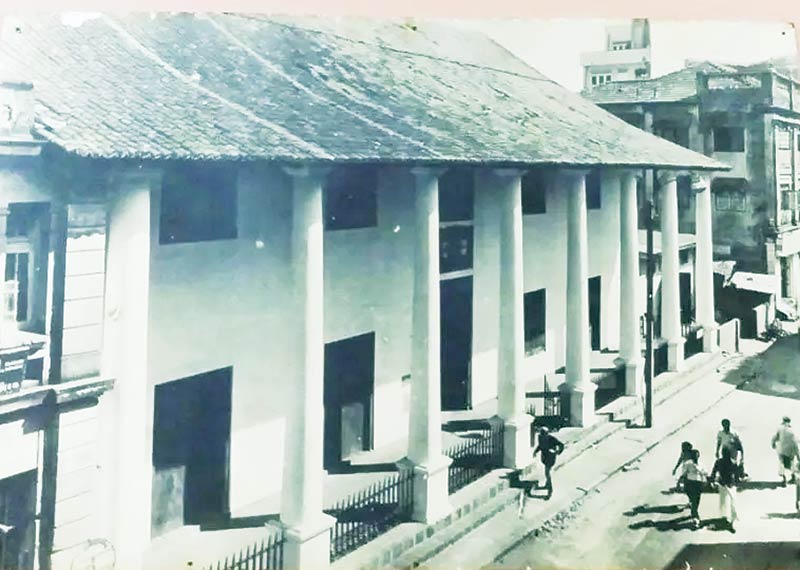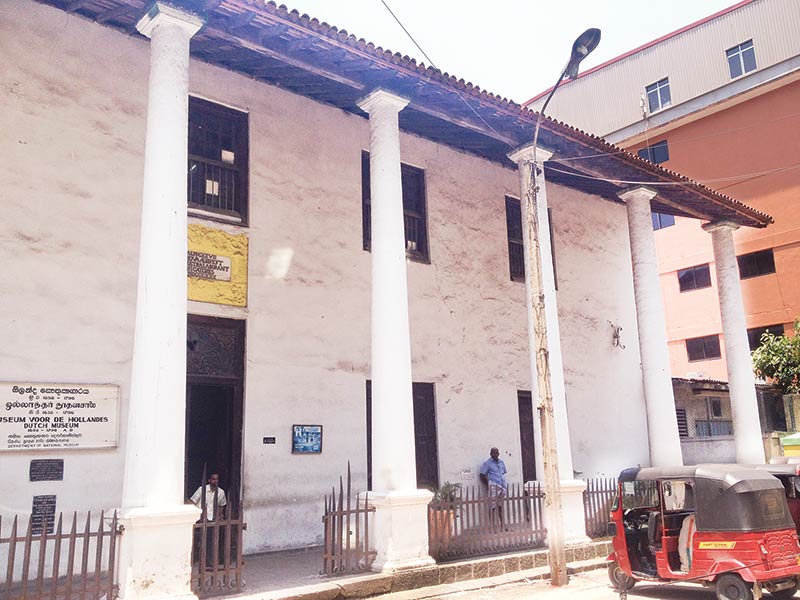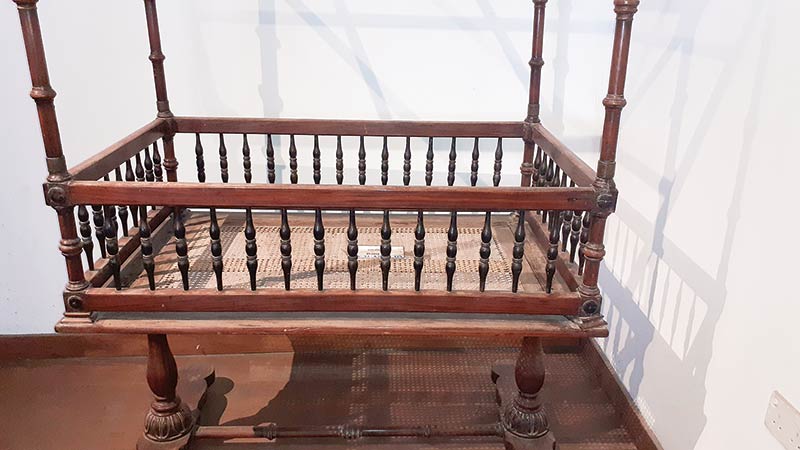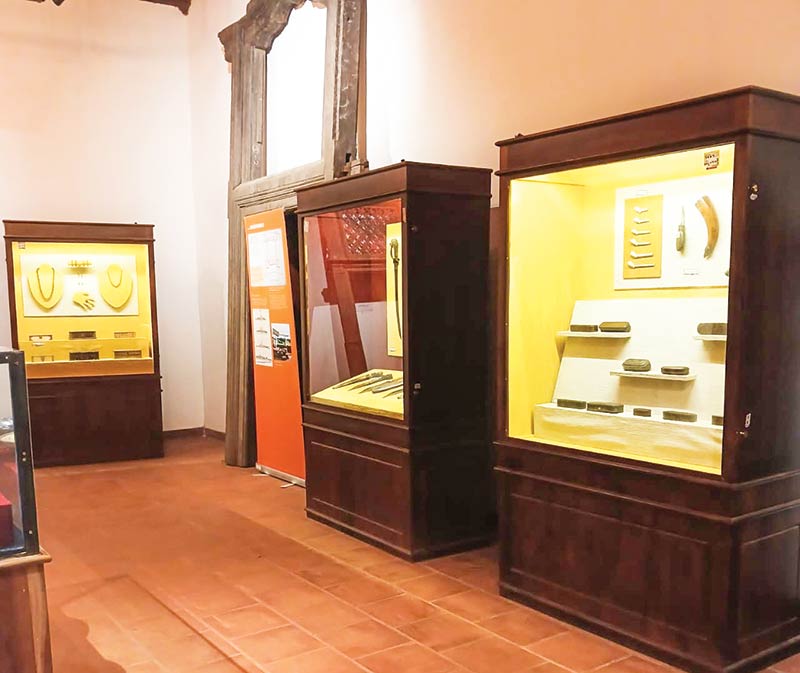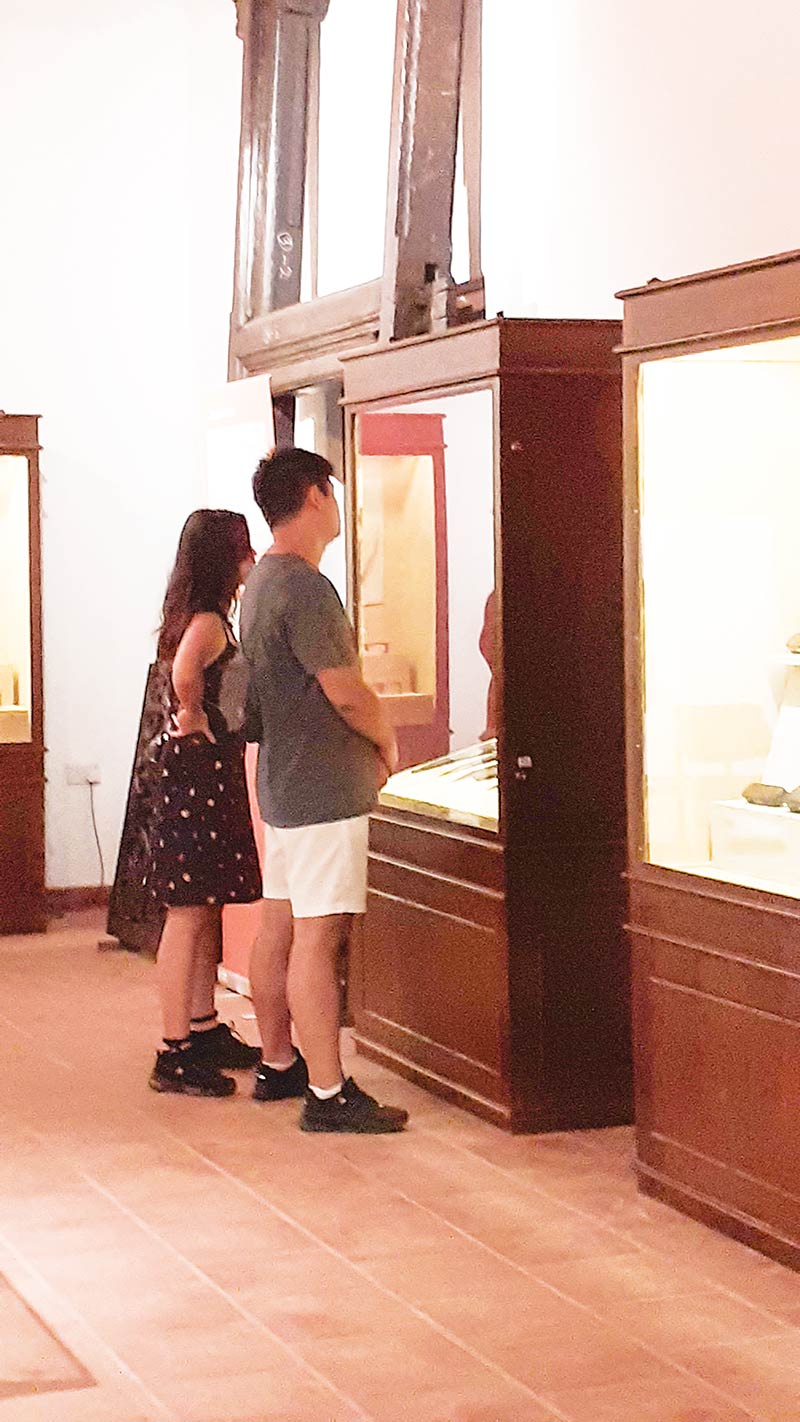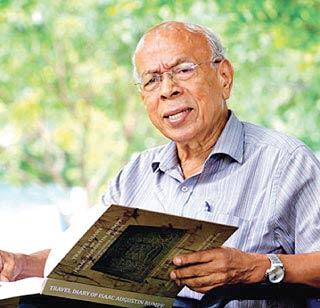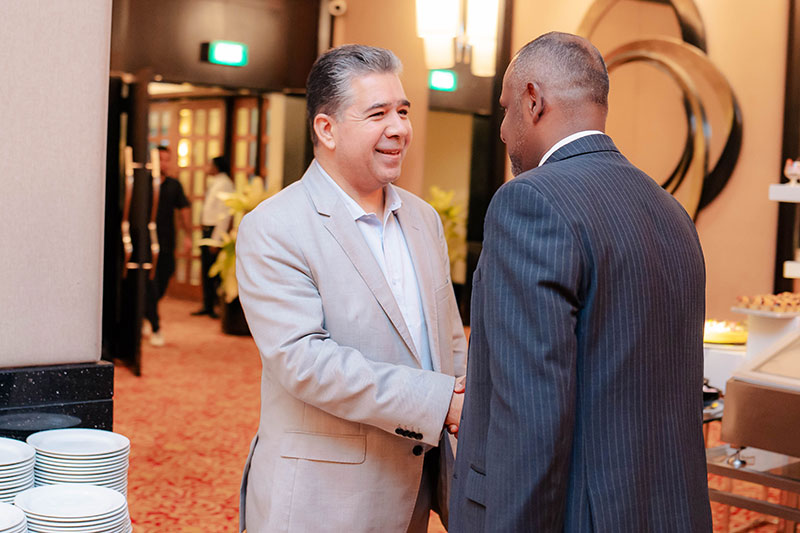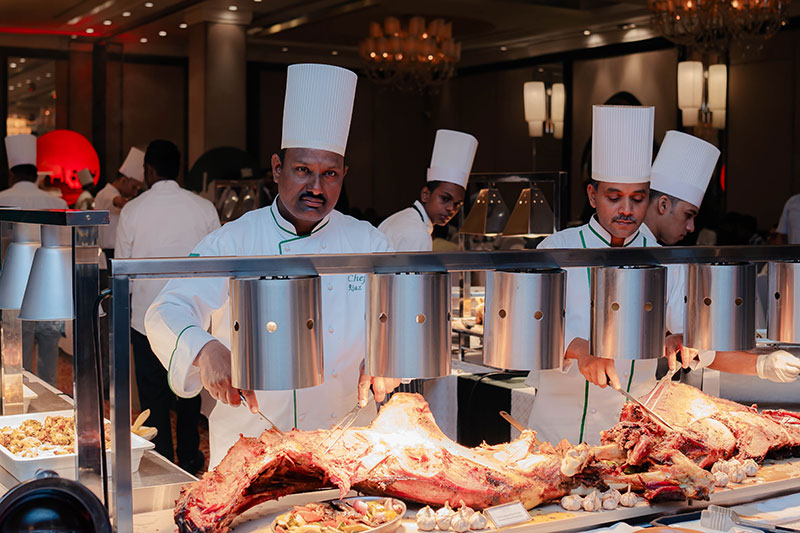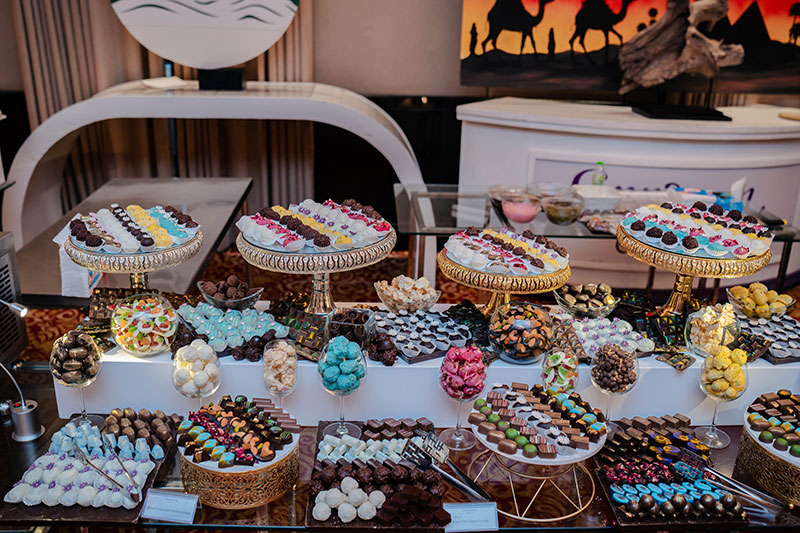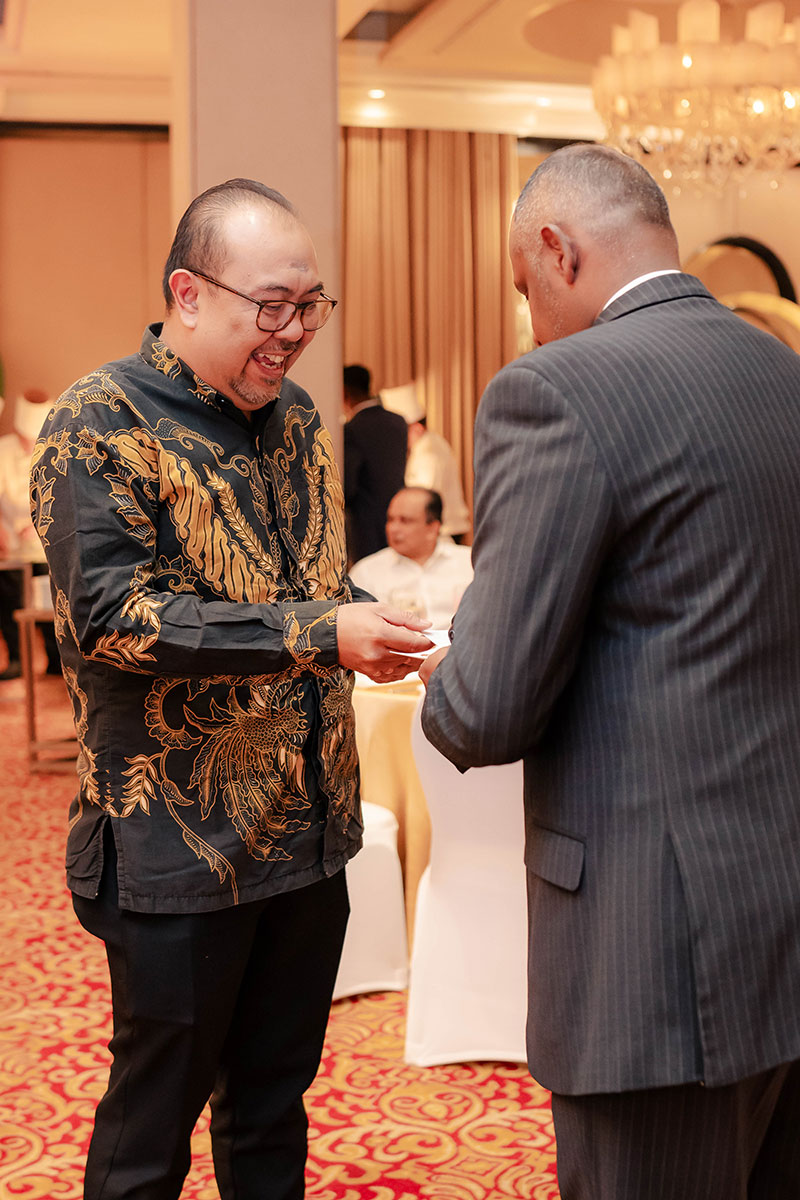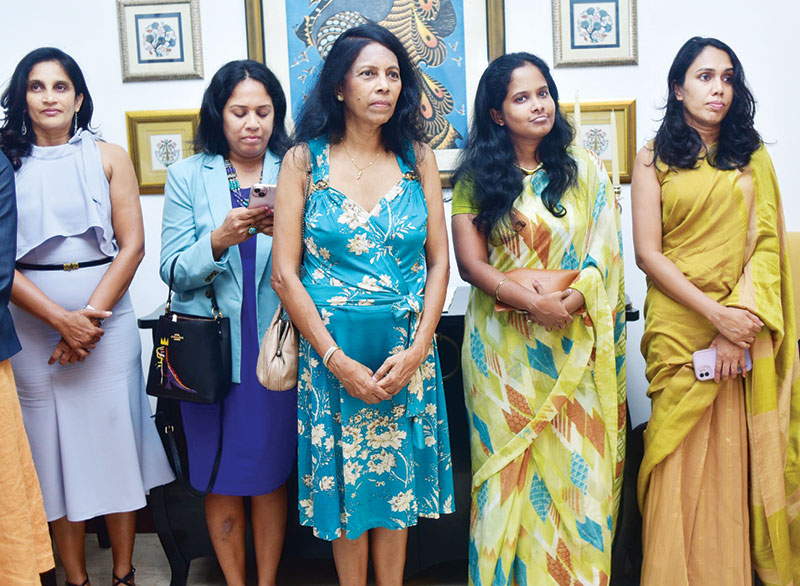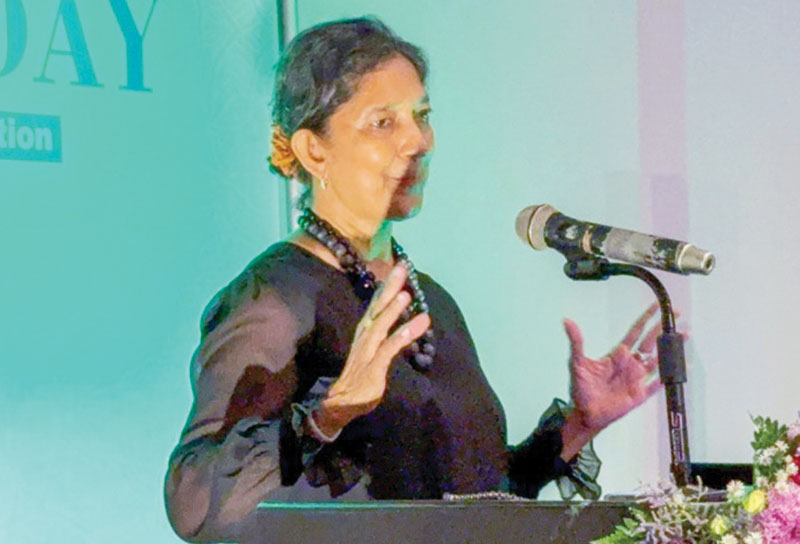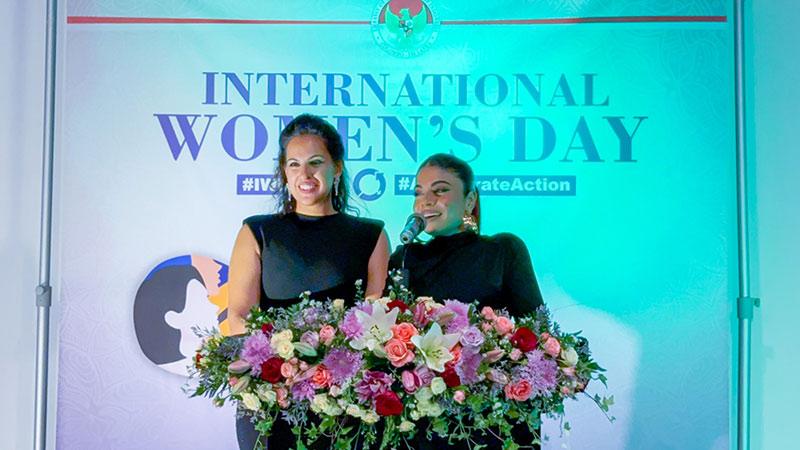Life style
A monument to all things Dutch
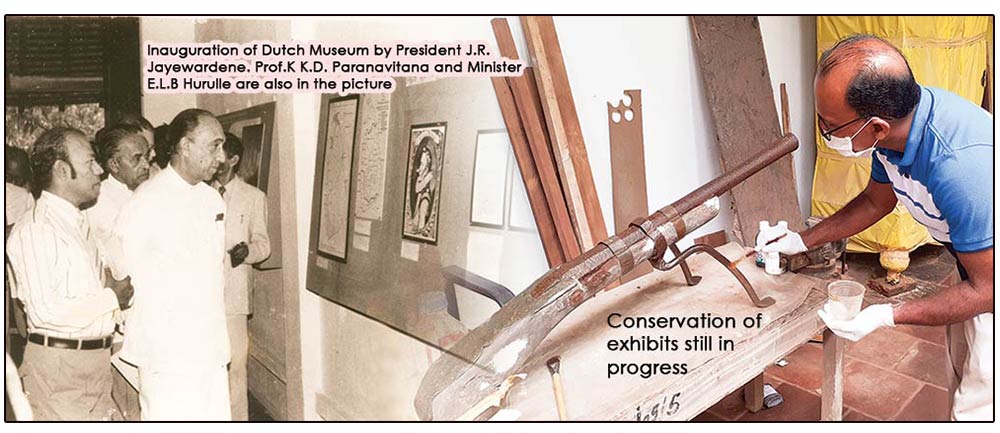
By RANDIMA ATTYGALLE
The Dutch Museum in Colombo, located at Prince Street, Pettah, was closed for several years for renovation. It was reopened to the public early this month. The conservation project which is nearing completion hopes to restore this archaeologically protected monument to its former glory.
More than a century since the Portuguese fortified Colombo, the city was lost to the Dutch in 1656 who remodeled the Portuguese fort. A new fortress or a citadel ringed by nine bastions, ramparts and deep moats replaced the original Portuguese-built Colombo Fort. The fort or kotuwa in the local language was known as the casteel or the castle by the Dutch. High-ranking Dutch officials lived in the casteel. Outside the Fort the surroundings are today known as Pitakotuwa or Pettah (an adaptation of the Tamil pettai meaning ‘a suburb outside a fort’). It was known as Oude Stad in the Dutch days. The Dutch, planned the town on a grid pattern with five principal streets- now known as Bankshall Street, Main Street, Keyzer Street, Prince Street and Maliban Street.
Tribute to a prince
Running parallel to Pettah’s Main Street is Prince Street – what the Dutch called the ‘Prins Straat’, named in honour of the new-born son of Kandyan King Rajasinha II. Far from its royal splendour of the past, marked by villas with lush gardens and streets shaded with green trees, Prince Street is consumed by a commercial tide today. Cutting across Malwatta Rd. – Pettah’s flea-market – lies Prince Street. (The smartest way to reach it is either on foot or in a tuk-tuk.) The street is dominated by opticians, sidewalks overrun by vendors peddling from achcharu to counterfeit branded clothing and naatamis (porters) whose calls ring in the air. It is impossible for a visitor to visualize a colonial yesteryear here. You will suddenly come upon an imposing mansion with eight colonnades of striking height looking completely out of place in these surroundings.
- Dutch Museum building in olden days
- Dutch Museum in Colombo
Monument to Dutch architecture
The only vestige of the Dutch legacy in these otherwise changed surroundings, is the Dutch Museum (as it is today). It was said to be the largest building in Pettah, as documented in ‘Streets and Buildings in the Pettah,’ published in the Ceylon Literary Register of September 2, 1887.
The villa which is also believed to have been the residence of Governor Thomas van Rhee who held office from 1692 to 1697 is a living monument to Dutch colonial architecture. Some historical sources also document the place to have been the one-time residence of Count Carl van Ranzow of Colombo.
Administered by the Department of National Museums, the Dutch Museum with its seven galleries, offers the visitor a window to Sri Lanka’s Dutch heritage. From the arrival and establishment of the Dutch to their final place of resting, the museum exhibits their way of life. The galleries are dedicated to Dutch furniture and utensils, the network of forts erected across the island, artillery and jewellery, VOC coins and tombstones portray the political and socio-economic status of the maritime provinces of Sri Lanka under the Dutch and mirror diverse aspects of life and culture of the day. With its high roofs and a gallery of columns, typical of Dutch architecture, the building had been used for different purposes over the centuries before it was finally declared a museum in 1982. It was inaugurated by President J.R. Jayewardene on July 10, 1982.
A governor’s residence, seminary and more
From Governor’s residence, it became a seminary, an orphanage or weeskamer, hospital, army barrack, police training school and finally a post office in 1932. The Latin inscription above its entrance which is still visible quotes Psalm 127: ‘Except the Lord build the house, they labour in vain that build it.’ Below this inscription is the date ‘1780’ which is believed to be the year in which the seminary was established. Dr. Jurrien van Goor in his article ‘The Rectors of the Dutch Seminary at Prince Street Colombo’ (published in the Netherlands Alumni Association of Sri Lanka (NAAL) Journal Special Edition of 1982) writes:
‘Not many buildings can be found in Sri Lanka or elsewhere in the former Dutch colonies to equal its very fine and imposing row of front columns of such height. During its long history the building was used for many purposes: but the reason for which it was built makes it all the more exceptional. Nowhere else in the Dutch colonies were founded during the eighteenth century seminaries or schools in which local youth received a secondary training. The few endeavours made at Batavia did not last long. Only Sri Lanka can boast of an uninterrupted educational record of such long duration under the Dutch’. The writer goes onto say that even the curricular of the early English schools followed the pattern of the Dutch seminary.
A museum takes shape
The building functioned as the Pettah Post Office from 1932 until 1971 when one of the sidewalls collapsed during the monsoon rains and made it uninhabitable. The question then arose on what to do with the premises. The suggestion to demolish it was opposed by the Royal Asiatic Society and the Dutch Burgher Union- the latter then led by Dr. R.L. Brohier. In his book Changing Face of Colombo, Brohier notes that ‘there is today no better example of the more imposing and typical building the Dutch erected in the Oude Stad than this monument with its high solid and substantial pillars of brick and plaster supporting the façade.’
The writer (The first Ceylonese to become Deputy Surveyor General and a noted authority on the country’s ancient irrigation works) makes an interesting observation that his great grandfather, Peter Brohier, had lived in a villa on the Prince Street (which he had purchased in 1834) opposite the Orphan Chamber. It was here too that his son (writer’s grandfather) was born two years later. The villa which Brohier refers to opposite the present Dutch Museum is replaced by a row of opticians’ premises teeming with crowds.
In 1973, a committee was established with representatives drawn from multiple state and international agencies to restore the building and establish a museum covering the Dutch colonial period. The restoration was funded by the Netherlands-Sri Lanka Foundation, founded by the late Dr. Evert Jongens. The restoration of the building commenced in 1977 and was completed in 1981 under the supervision of architect Ashley de Vos. The plan for the museum galleries was drafted and executed with the help of the Amsterdam Historical Museum.
Only green patch in Pettah
Prof K.D. Paranavitana, eminent historian and an authority on the Dutch rule in Sri Lanka who served the restoration project as a consultant, recollects procuring several pieces of Dutch furniture for the museum with the assistance of NAAL (Netherlands Alumni Association of Lanka). Among them is a cot which is one of the highlights among the collection in the ‘Bedroom Gallery’. Prof. Paranavitana who was then an archivist at the President’s Office was also responsible for the preparation of narratives for the exhibits.
“The Dutch Museum in Colombo was then a popular venue for the functions of the Dutch Embassy in Colombo and NAAL. I even had a book launch of mine in the beautiful court yard or the meda midula. This is probably the only green patch remaining in Pettah today which was once a fashionable quarter of Colombo shaded by lots of trees.”
The court yard with the unmistakable ‘Dutch-well’ which was once adorned with numerous flowering plants and foliage is being landscaped right now. The well too is under conservation. The massive cinnamon tree and the nutmeg tree found in the garden are symbolic of the spice trade which first brought the Dutch here. The side verandahs which open to the courtyard consist of several rooms that had originally served as servants’ quarters and storerooms. Today they are converted into administrative spaces. One of the rooms called ‘Hall of Death’ houses nearly 50 tombstones which were retrieved from a side alley of Prince Street when the Dutch cemetery of Pettah gave way to expanding trade centres.
Laborious conservation
The museum is home to nearly 300 exhibits today. A sizable number has already been conserved and others are still being done says the Dutch Museum keeper Thanuka Kumarasiri. The garden which is the highlight of the place too is to be restored to its former glory soon he assures. “We reopened the museum only in early July this year but we have a considerable number of visitors including foreigners. Once the place is fully done, we hope to attract more crowds,” he says adding that an admission ticket is still issued at a very nominal rate.
The conservation of the Dutch Museum in Colombo was among one of the most challenging tasks before her as the Director General of the Department of Museums says Sanuja Kasthuriarachchi. “The location of the museum in one of the most congested parts of Colombo, the COVID threat and the political and economic unrest in the country in the past few years, made the project an uphill task. Despite all challenges, this archaeologically protected monument which is more than three centuries old, that struggled to survive amidst unplanned structures surrounding it is once again open to the public.”
The conservation project is supported by the State Engineering Corporation and the Department of Archaeology. “We have now reached the final stages of the project and we hope to restore this iconic building into a traditional Dutch home where visitors can step into a tranquil space in the busy commercial hub of Colombo and relive a bygone era,” says Kasthuriarachchi. She invites the public to donate any memorabilia from the Dutch era to the museum which stands as an enduring monument to the Dutch legacy.
Dutch Museum at Prince Street Pettah is open from Tuesday to Sunday. Closed on Mondays and public holidays.
(Pic credit: Randima Attygalle, Department of National Museums & Prof. K.D. Paranavitana)
Life style
Celebration of unity and tradition at Iftar dinner
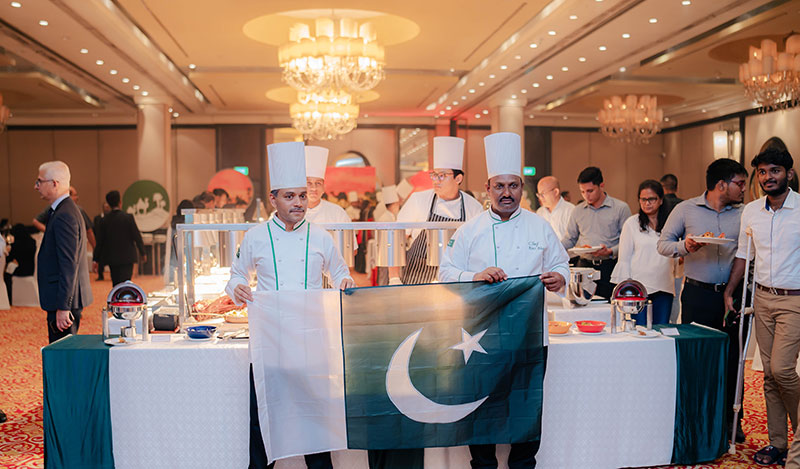
In a grand celebration of unity and tradition, Cinnamon Lakeside Colombo hosted an exclusive and elegant Iftar dinner at the prestigious King’s Court. This remarkable evening, hosted by Nazoomi Azhar, General Manager of Cinnamon Lakeside Colombo, brought together a distinguished gathering of ambassadors, key figures, top corporate executives, and esteemed members of the media.
The event showcased a spectacular array of culinary delights, with a highlight being the masterpieces crafted by renowned Pakistani Chef Riaz Bhatti. His exquisite creations, alongside an extensive selection of traditional and contemporary delicacies of Pakistani dishes, left guests in awe of the lavish spread and exceptional flavors.
Among the standout dishes of the evening were the rich and aromatic Mutton Raghni Josh, the flavorful Mutton Shahi Qorma, and the perfectly spiced Peshawari Beef Chapli Kabab. Guests also delighted in the Lahori Chicken Tikka Boti and the indulgent Chicken Peshawari Karahi, which added a taste of authenticity to the menu. The Iftar spread was further complemented by traditional desserts such as Gulab Jamun, Shahi Tukda, and Ras Malai, providing a sweet ending to the feast.
The atmosphere was one of warmth and hospitality, reflecting the spirit of Ramadan while offering a truly memorable experience. Guests were highly impressed with the impeccable service and the thoughtfully curated menu, making this Iftar dinner a standout occasion in Colombo’s social calendar.
Cinnamon Lakeside Colombo, under the leadership of Nazoomi Azhar, continues to set the benchmark for luxury hospitality, delivering unforgettable experiences through its commitment to excellence.
Life style
Women -building blocks in shaping history of Turkiye
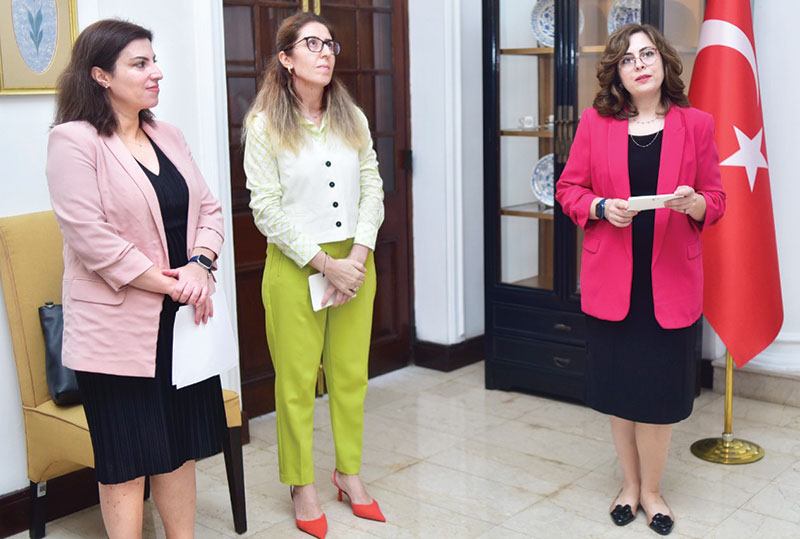
 In the Republic of Turkiye women have been one of the building blocks in shaping Turkiye for centuries. However, especially since the founding of the Republic, Turkiye has been one of the leading countries in the world, especially in terms of the political visibility of women. Women were given the right to vote long before women were given political rights in many democratic and modern countries.
In the Republic of Turkiye women have been one of the building blocks in shaping Turkiye for centuries. However, especially since the founding of the Republic, Turkiye has been one of the leading countries in the world, especially in terms of the political visibility of women. Women were given the right to vote long before women were given political rights in many democratic and modern countries.
Turkish women are known for their unwavering determination and resilience. They exhibit remarkable dedication and courage in pursuing their goals and challenge injustice. Their hard work and perseverence contribute to their advancement of society. These statements were expressed by the Deputy Chief of Mission of Turkiye M/S Merve Goozde Otlu at the residence of the Turkish Ambassador in Sri Lanka, on the occasion of the International Women’s Day.
This day is also important for Turkish women, who have played a vital role in shaping Turkish society, from the early days of our Republic to the present said the Deputy Chief of Mission. In her speech she also pointed out that the founder of the Republic, Mustafia Kemal Ataturk, has an important place in the hearts of all Turkish people, but his visionary leadership for women’s rights are especially precious for all women of Turkiye.
She explained “Ataturk strongly believed in women’s equality and emphasized that a modern and progressive society could only be achieved if women had equal opportunities as men’’
“Women were encouraged to participate in all areas of life, including education, work life and politics. One of the most remarkable steps Ataturk took was granting women the right to vote and as early as 1930, women were able to run for office at the local elections and in 1934 women were granted this right long before many other countries (One year after that, there were already 18 women MPs). When we look at Turkish history, we see countless inspiring women who have shaped our country, playing crucial roles achieving many milestones. These women have proved that Turkish women could achieve greatness in any field from science to business, from arts to sports, if given the opportunity, she remarked.
Turkish women have also made a significant contribution to diplomacy, a field often seen as male-dominated, she remarked.
For decades, Turkish women have been representing our country with strength and determination on the global stage. The first woman diplomat Mrs. Adile Ayda was recruited in 1932, while Ambassador Filiz Dinemen is the first woman Ambassador of Turkiye, assigned to the Hague in 1982.
Women representation has been increasing in the Ministry of Foreign Affairs, constituting almost 40% of the Ministry.
It is a personal honour for me to serve in a country like Sri Lanka, which gave the world the first female Prime Minister in history, Sirimavo Bandaranaike, she said with pride.
Her leadership showed that women can take on the highest responsibility and be a driving force not just for women but for the whole society.
The contribution of women in Turkiye in the field of Science and Technology is far reaching. She said in Turkiye, a prominent scientist who worked for NASA, whose research was instrumental in the legendary 1962 Apollo mission. She is Dihlhan Eryunt, was the recipient of the NASA Appolo Achievement Awards she said with pride.
The First Secretary, Imren Kaygisiz said Turkish women who have contributed to the development of the country and thier enduring impact on society who are still continuing to inspire strength,resilience and success of women
The Commercial Counsellor M/s Gamze Erc an also paid tribute to the founder of Modern Republic of Turkiye, Mustafa Kemal Ataturk who gave importance to education of Turkish women and leader believed that development of a nation depends on a strong education foundation.
The evening had all the trappings of glamour followed by high tea.
Life style
Sri Lanka showing strong commitment to gender equality
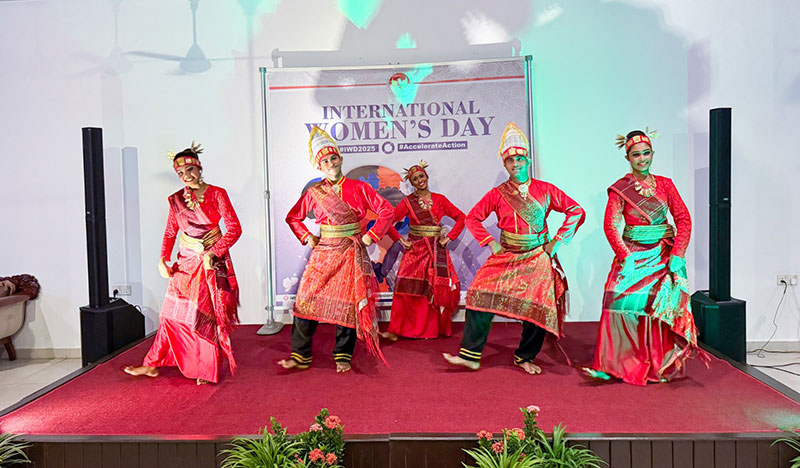
The Embassy of the Republic of Indonesia in sri Lanka hosted the International Women’s Day ceremony at thier residence.
Ambassador of Indonesia Dwi Gustina Tobing invited a large gathering of invitees including the Minister of Women and Child Affairs Saroja Savithri Paulraj who was the Chief Guest. CBL Group Managing Director Sheamalee Wickramasighe, popular musician Umaria Sinhawansa and Stephanie Siriwardena also addressed the gathering. The ambassador looking elegant was busy welcoming the guests at her residence.
An evening of camaraderie, glitz and glamour. The event featured an insightful session aimed to empower women, and served as a tribute to the commitment of women who has contributed immensely. The ambassador in her speech said by celebrating the achievements of women and amplifying their voices, we pave the way for a more inclusive and equitable society, where gender does not hinder opportunity but enriches collective experiences. Here is an excerpt from the ambassador’s speech.
A warm welcome to all of you. It is an honour to host this reception in commemoration of International Women’s Day 2025.
She said ” This year’s theme, “Accelerate Action”, is a powerful call to all of us. It underscores that equality cannot wait, and that all sectors of society must work together to speed up progress in women’s rights and empowerment.”
- CBL group managing director Sheamalee addressing the gathering
- Stephani and Umaria
Around the world, we have seen tremendous strides toward gender equality in politics, economics, and social spheres. Women are increasingly taking up leadership roles, contributing to economic growth, and shaping the future of our societies.
In Indonesia, we are proud of the progress we have made in advancing women’s participation. She said
She reiterated that 127 women were elected to parliament, making up 22.1% of the seats—the highest in our post-reform history. However, this is still below our target of 30%, which means there is room for improvement.
Our new cabinet includes 14 women, both as ministers and deputy ministers, demonstrating our commitment to gender-inclusive governance.
Beyond politics, women are the backbone of Indonesia’s economy. Micro, Small, and Medium Enterprises (MSMEs) contribute over 60% to the national GDP, and 64.5% of these businesses are managed by women.
Additionally, Indonesia ranks among the top four countries globally for female business leaders
She pointed out Sri Lanka, too, has made significant strides in women’s empowerment. When I met with Minister Saroja Savithri Paulraj last week, we discussed the progress Sri Lanka has made in increasing women’s representation in politics and the economy. From women entrepreneurs driving economic growth to initiatives supporting women in leadership, Sri Lanka is showing a strong commitment to gender equality.
Many countries have made progress in advancing women’s empowerment, yet, despite this progress, we must recognize that challenges remain. Women still face barriers to equal pay, leadership opportunities, financial inclusion, and social mobility. Gender-based violence, discrimination, and unequal access to resources continue to hinder the advancement of women in many parts of the world.
This is why collaboration is crucial. By sharing experiences, policies, and best practices, we can accelerate meaningful action to bridge the gender gap.
We must continue working together, fostering partnerships that empower women economically and socially. Indonesia is committed to strengthening collaboration with Sri Lanka and other nations to create more opportunities for women, recognizing their immense importance. Invitees were able to enjoy authentic Indonesian delicacies specially curated by the Ambassador herself.
By Zanita Careem
-

 Business2 days ago
Business2 days agoStrengthening SDG integration into provincial planning and development process
-

 News6 days ago
News6 days agoBid to include genocide allegation against Sri Lanka in Canada’s school curriculum thwarted
-

 Sports7 days ago
Sports7 days agoSri Lanka’s eternal search for the elusive all-rounder
-

 Business16 hours ago
Business16 hours agoNew SL Sovereign Bonds win foreign investor confidence
-

 Sports3 days ago
Sports3 days agoTo play or not to play is Richmond’s decision
-

 News7 days ago
News7 days agoComBank crowned Global Finance Best SME Bank in Sri Lanka for 3rd successive year
-

 Features7 days ago
Features7 days agoSanctions by The Unpunished
-

 Features7 days ago
Features7 days agoMore parliamentary giants I was privileged to know

